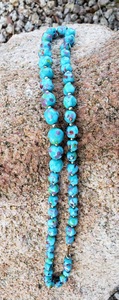‘Look but don’t touch’ was my mom’s commandment whenever we drove to the next biggest town to visit the mall.
That mall, circa 1973-1978, had a department store and lunchroom on one end, a record store and Waldenbooks at the other, and in between stretched a dim, cobblestone-paved concourse lined with various odd shops.
A Sprouse-Reitz variety store boasted at least two long aisles of art glass and porcelain pieces on clear glass shelves. Vases, bowls, candelabras, oil lamps with painted scenes, figurines, cups, etc. Thinking back now, with half a century more experience, I realize some of it was very high-end European stuff.
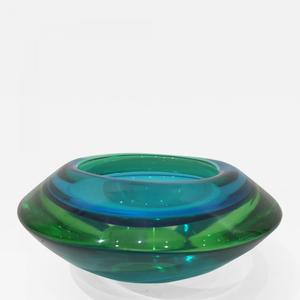
For my younger self, it was like a trip to a museum…as long as I didn’t touch.
One of the biggest draws was the *wall* of glass cases that held glass beaded necklaces, bracelets, rings, and earrings. Most of this was 1950s-1970s European-style work like these Venetian ‘wedding cake’ beads, with some ornate base-metal and vivid crystal gems added for the Hippie crowd.
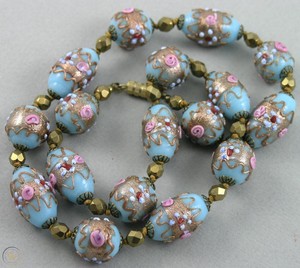
Those pieces helped build my love of beads. I certainly couldn’t buy them, but I enjoyed looking.
What was it all doing *there*, in a back-of-beyond New Mexico mini-city of 35,000 people, serving a wider area of maybe 100,000?
Oil.
Oil money.
Specifically, the discretionary income from a middle (and scant upper) class that flowered even as two recessions cratered the rest of the 1970s US economy. The men worked in ranching, military support, and petrochemical industries. The women largely stayed home with kids. The local mall was a posh oasis.
The older set still had 1930s Depression-Era behaviors coded into their very bones. Thriftiness warred with an aspirational materialism often driven by Hollywood ideals of glamor and luxury. People collected lovely things when they could afford them.
They also collected hideous kitsch like this ‘rain lamp’.
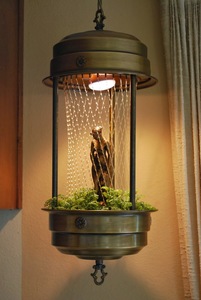
Not kidding. Something like this held pride-of-place at an expensive furniture store, and even at age seven I could not understand why.
A vocational college & a new retiree class helped fuel the hobby industry even in our desert oasis: people could make their own art!
So a buyer for Sprouse-Reitz brought in all these strange, wonderful glass pieces. And sold a lot of them…I remember a bit of turnover when Mom & I went to town twice a month.
The vintage pieces I show here are representational, drawn from current online catalogs.
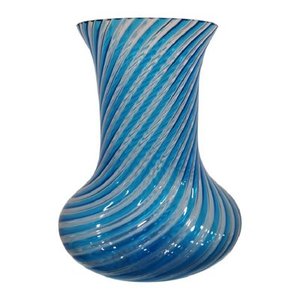
Nor was it the only store of its kind in town.
There were at least two furniture stores. I recall two floral-arrangement shops that sold silk and beaded flowers and strung craft beads. At least two silversmith supply shops supported the Indian jewelry trade. A Ben Franklin’s hobby shop. An art supply store and gallery catering to the college and retirees. An import store showcasing brass, glass, and other artifacts from around the world. Several bookstores. A Hallmark store with a smaller section of art glass. The first fine-craft gallery (Gallery 20) that I encountered in-person.
That first mall, a zombie ruin of past dreams, was torn down a few years ago. The bigger, fancier mall that replaced it in the early 80’s (at the richer north end of town) is now a decaying shell itself.
Mom passed in the late 80s.
But I swear I can still feel her amused tolerance of my kid-in-a-candy-store enthusiasm for interesting beads, as I add to my collection.
Most of them are slated to go into my own artwork: fiber books, wall hangings, jewelry, and costume pieces.
Some, I keep because it would be a crime to destroy.
I’m not sure where this Hobe glass necklace from Goodwill will end up: intact, restored or restrung, or used in art.
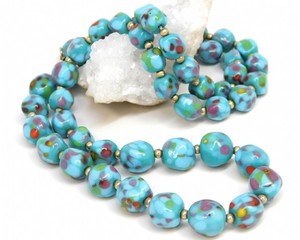
Added October 6: They arrived, and they are lovely. 